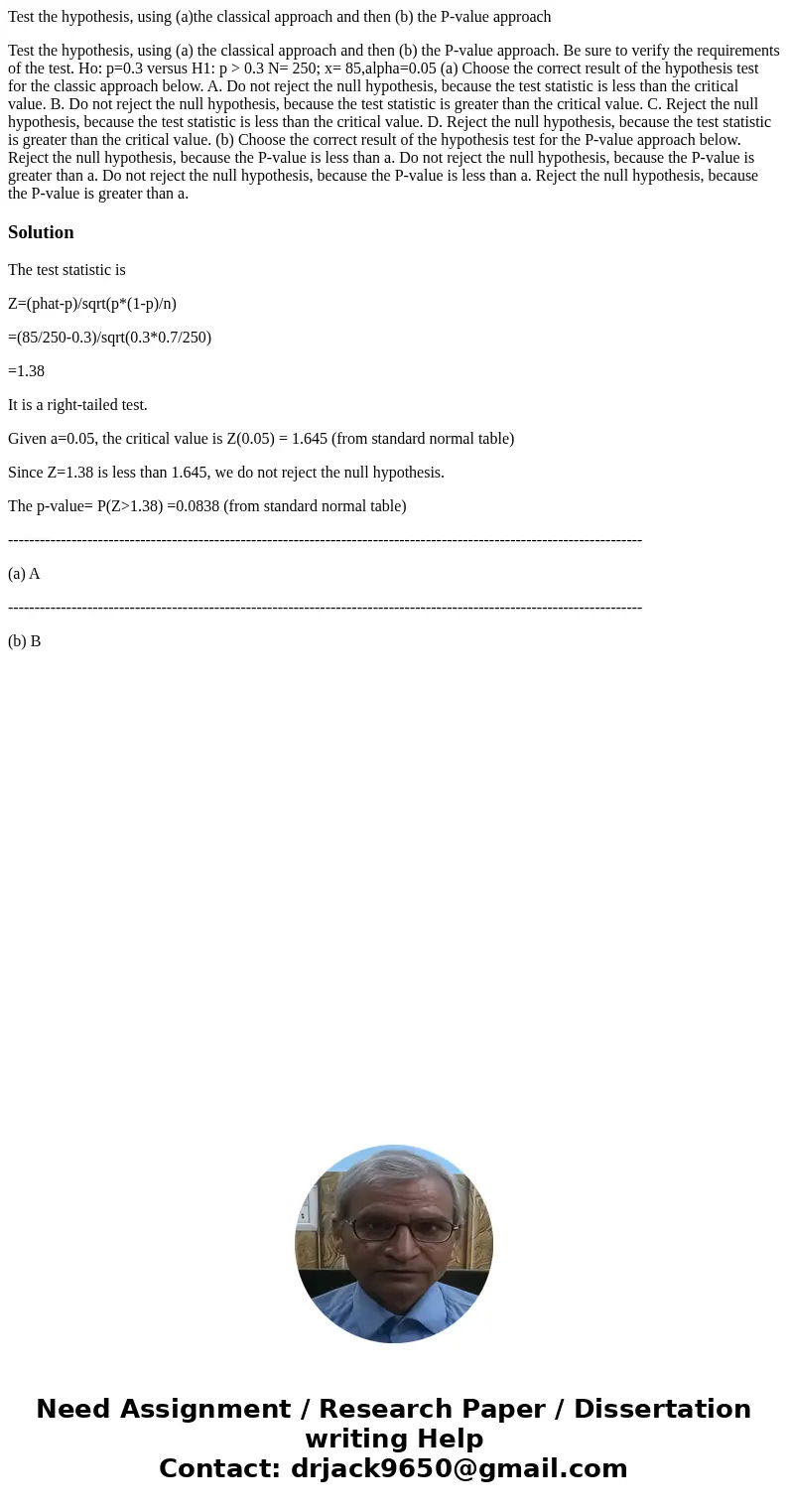Test the hypothesis using athe classical approach and then b
Test the hypothesis, using (a)the classical approach and then (b) the P-value approach
Test the hypothesis, using (a) the classical approach and then (b) the P-value approach. Be sure to verify the requirements of the test. Ho: p=0.3 versus H1: p > 0.3 N= 250; x= 85,alpha=0.05 (a) Choose the correct result of the hypothesis test for the classic approach below. A. Do not reject the null hypothesis, because the test statistic is less than the critical value. B. Do not reject the null hypothesis, because the test statistic is greater than the critical value. C. Reject the null hypothesis, because the test statistic is less than the critical value. D. Reject the null hypothesis, because the test statistic is greater than the critical value. (b) Choose the correct result of the hypothesis test for the P-value approach below. Reject the null hypothesis, because the P-value is less than a. Do not reject the null hypothesis, because the P-value is greater than a. Do not reject the null hypothesis, because the P-value is less than a. Reject the null hypothesis, because the P-value is greater than a.Solution
The test statistic is
Z=(phat-p)/sqrt(p*(1-p)/n)
=(85/250-0.3)/sqrt(0.3*0.7/250)
=1.38
It is a right-tailed test.
Given a=0.05, the critical value is Z(0.05) = 1.645 (from standard normal table)
Since Z=1.38 is less than 1.645, we do not reject the null hypothesis.
The p-value= P(Z>1.38) =0.0838 (from standard normal table)
------------------------------------------------------------------------------------------------------------------------
(a) A
------------------------------------------------------------------------------------------------------------------------
(b) B

 Homework Sourse
Homework Sourse